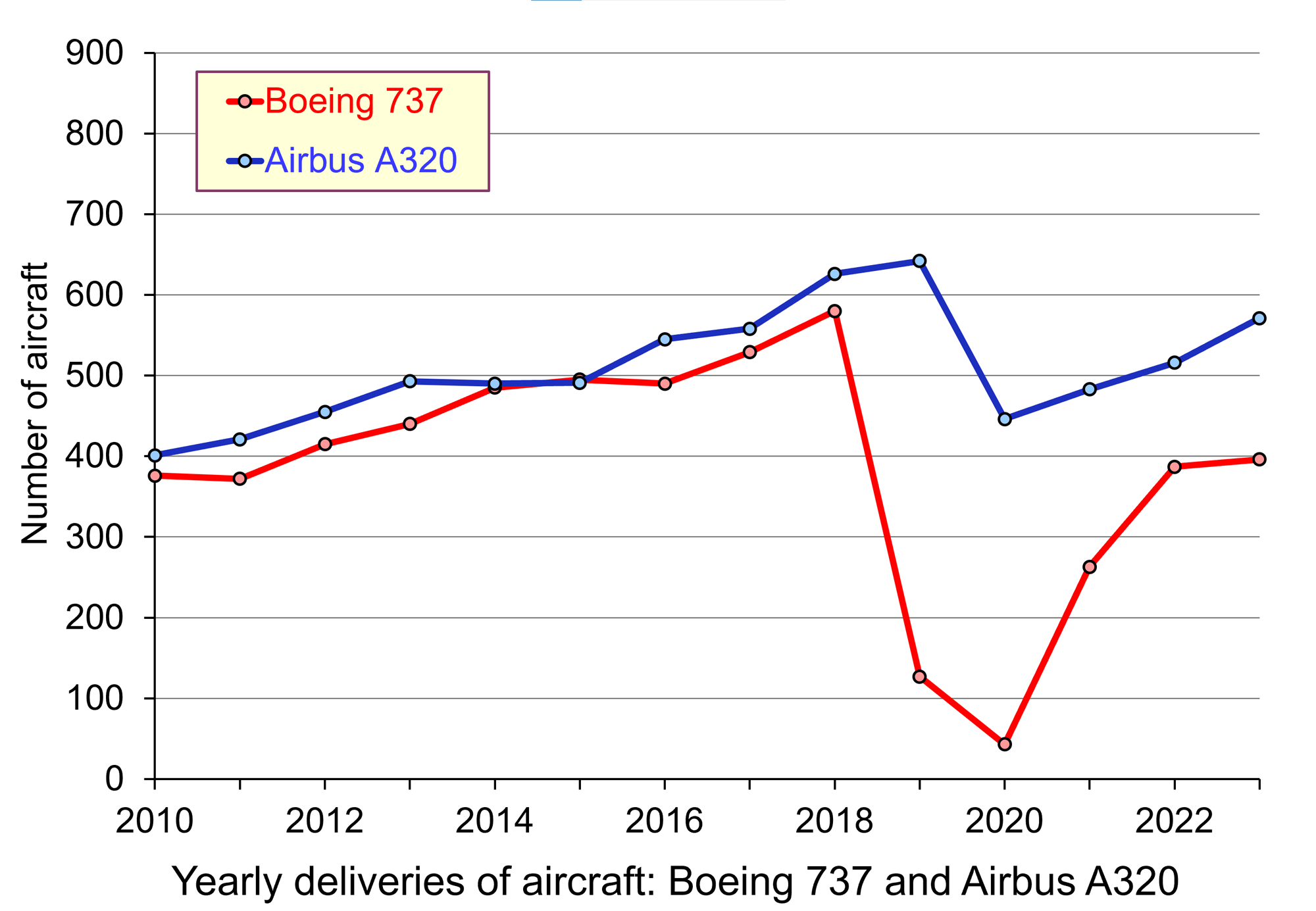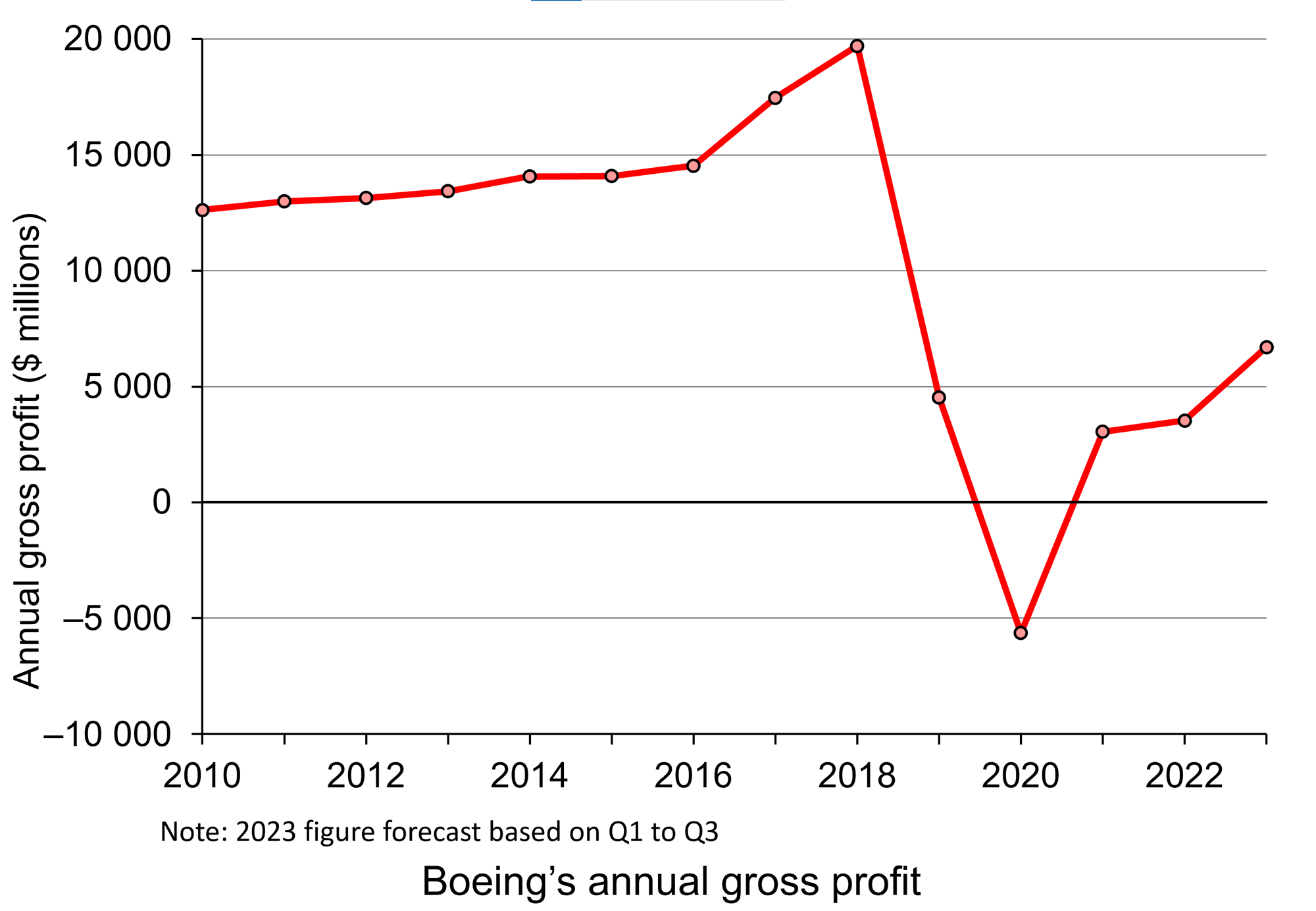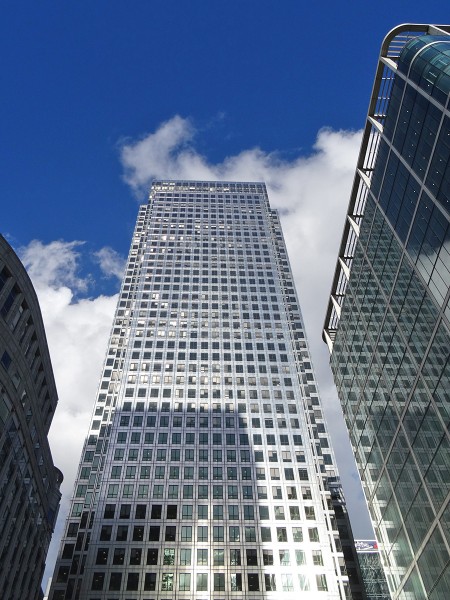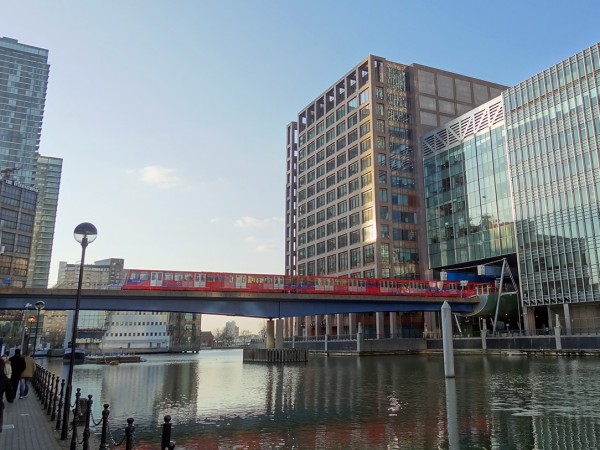 The traditional theory of the firm assumes that firms are profit maximisers. Although, in practice, decision-makers in firms are driven by a range of motives and objectives, profit remains a key objective for most firms – if not maximising profit, at least trying to achieve profit growth so as to satisfy shareholders, retain confidence in the company and prevent the share price from falling. After all, if the company is profitable, it is easier to fund investment, either from ploughed-back profit, borrowing or new share issue. And greater investment will help to drive profits in the future.
The traditional theory of the firm assumes that firms are profit maximisers. Although, in practice, decision-makers in firms are driven by a range of motives and objectives, profit remains a key objective for most firms – if not maximising profit, at least trying to achieve profit growth so as to satisfy shareholders, retain confidence in the company and prevent the share price from falling. After all, if the company is profitable, it is easier to fund investment, either from ploughed-back profit, borrowing or new share issue. And greater investment will help to drive profits in the future.
But does the pursuit of profit and shareholder value as the number-one objective actually lead to higher profit? It could be that a prime focus on other things such as consumer satisfaction, product design and value, innovation, safety, worker involvement and the local community could lead to greater long-term profit than an aggressive policy of marketing, cost cutting and financial rejigging – three of the commonest approaches to achieving greater profits.
Boeing disasters
In 2018 and 2019 there were two fatal crashes involving the new 737 MAX-8 aircraft. On 29 October 2018, Indonesia’s Lion Air Flight 610 crashed into the Java Sea; all 189 people on board died. On 10 March 2019, Ethiopian Airlines Flight 302 similarly crashed; all 157 people on board died. Both disasters were the result of a faulty automatic manoeuvring system. The company and its CEO, Dennis Muilenburg, knew about issues with the system, but preferred to keep planes flying while they sought to fix the issue. Grounding them would have cost the company money. But taking this gamble led to two fatal crashes. This damaged the company’s reputation and cost it billions of dollars.
 The US Securities and Exchange Commission (SEC) investigated the cases and found that the company had made false statements about the plane’s safety and had put ‘profits before people’. But putting profits first ended up in a huge fall in profits, with the 737 MAX grounded for 20 months.
The US Securities and Exchange Commission (SEC) investigated the cases and found that the company had made false statements about the plane’s safety and had put ‘profits before people’. But putting profits first ended up in a huge fall in profits, with the 737 MAX grounded for 20 months.
Since the crashes there have been several other issues with various critical systems, including stabilisation, engines, flight control systems, hydraulics and wiring. In December 2023, Boeing asked airlines to inspect its 737 MAX planes for a potential loose bolt in the rudder control system.
On 5 January 2024, Alaska Airlines Flight 1282 experienced an emergency. A window panel on the 737 MAX-9 aircraft, which replaced an unused emergency exit door, blew out and the cabin depressurised. Fortunately the plane was still climbing and had reached only just under 5000m – less than half of the cruising altitude of over 11 500m. The plane rapidly descended and safely returned to Portland International Airport without loss of life. Had the incident occurred at cruising altitude, the rush of air out of the plane would have been much greater. Passengers would be less likely to be wearing their seat belts and several people could have been sucked out.
The Federal Aviation Administration (FAA) temporarily grounded 171 MAX-9s for inspections. It found that several planes had loose bolts holding the panels in place and could potentially have suffered similar blow outs.
Profits rather than safety?
Critics have claimed that the corporate culture at Boeing prioritised profit over safety. This was made worse in 2001 when company headquarters moved from Seattle to Chicago but production remained at Seattle. The culture at headquarters became sharply focused on financial success. Boeing was under intense competition from Airbus, which announced its more fuel-efficient version of the A320, the A320neo, in 2010, with launch planned for 2015. Boeing’s more fuel-efficient version of the 737, the 737 MAX, was announced in 2011, scheduled for first delivery in 2017. Since then, Boeing has been keen to get the 737 MAX to customers as quickly as possible. Also, Boeing has sought to cut manufacturing costs to keep prices competitive with Airbus.
Despite warnings from some Boeing employees that this competition was leading to corners being cut that compromised safety, Boeing management continued to push for more rapid and cheaper production to fight the competition from Airbus.
The aircraft industry is regulated in the USA by the Federal Aviation Administration (FAA). In 2020, the House Committee on Transportation and Infrastructure produced a detailed report on the industry. It found that the FAA delegated too much safety certification work to Boeing. This was a case of regulatory capture. It was also accused of sharing the goal of promoting the production of US-based Boeing in its competition with European-based Airbus.
Effects on profits
 But rather than a focus on profit leading to greater profits, safety issues have led to groundings of 737s, a fall in sales and a fall in profits. The first chart shows deliveries of 737s slightly lagging A320s from 2010 to 2018. Since then deliveries of 737s have fallen well behind A320s. In terms of orders for all planes, Boeing was ahead of Airbus in 2018 (893 compared with 747). Since then, Boeing has significantly lagged behind Airbus and in 2019 and 2020 cancellations exceeded new orders. The January 2024 incident and subsequent groundings are likely to erode confidence, orders and profits even further.
But rather than a focus on profit leading to greater profits, safety issues have led to groundings of 737s, a fall in sales and a fall in profits. The first chart shows deliveries of 737s slightly lagging A320s from 2010 to 2018. Since then deliveries of 737s have fallen well behind A320s. In terms of orders for all planes, Boeing was ahead of Airbus in 2018 (893 compared with 747). Since then, Boeing has significantly lagged behind Airbus and in 2019 and 2020 cancellations exceeded new orders. The January 2024 incident and subsequent groundings are likely to erode confidence, orders and profits even further.
 As you can see from the second chart, profits fell substantially in 2019, and with COVID fell again in 2020. They have not recovered to previous levels since. Depending on how the market responds to the issue of loose panel bolts on the MAX-9, profits could well fall again in 2024. There will almost certainly be a further erosion of confidence and probably of orders.
As you can see from the second chart, profits fell substantially in 2019, and with COVID fell again in 2020. They have not recovered to previous levels since. Depending on how the market responds to the issue of loose panel bolts on the MAX-9, profits could well fall again in 2024. There will almost certainly be a further erosion of confidence and probably of orders.
The Boeing story is a salutary lesson in how not to achieve long-term profit. A focus on design, quality and reliability may be a better means to achieving long-term profit growth than trying to appeal to shareholders by increasing short-term profits through aggressive cost cutting and hoping that this will not affect quality.
Video and audio
Articles
- ‘All those agencies failed us’: inside the terrifying downfall of Boeing
The Guardian, Charles Bramesco (22/2/22)
- A terrifying 10 minute flight adds to years of Boeing’s quality control problems
CNN, Chris Isidore (8/1/24)
- When A Company Prioritizes Profit Over People: Boeing CEO Tells Congress That Safety Is ‘Not Our Business Model’
Forbes, Jack Kelly (30/10/19)
- ‘Boeing played Russian roulette with people’s lives’
BBC News, Theo Leggett and Tom Burridge (November 2020)
- 737 Max: Boeing refutes new safety concerns
BBC News, Theo Leggett (26/11/21)
- 737 Max: Boeing to pay $200m over charges it misled investors
BBC News, Monica Miller (23/9/22)
- Boeing’s mid-flight blowout a big problem for company
BBC News, Theo Leggett (8/1/24)
- Boeing: US regulator to increase oversight of firm after blowout
BBC News (12/1/24)
- Boeing’s 737 Max Is a Saga of Capitalism Gone Awry
International New York Times, via Deccan Herald, David Gelles (24/11/20)
- Boeing and a dramatic change of direction
johnkay.com, John Kay (10/12/03)
- Congressional report faults Boeing, FAA for 737 Max failures, just as regulators close in on recertification
CNBC, Leslie Josephs (16/9/20)
- Boeing 737 Max: The FAA wanted a safe plane – but didn’t want to hurt America’s biggest exporter either
The Conversation, Susan Webb Yackee and Simon F Haeder (22/3/19)
- Boeing needs to get real: the 737 Max should probably be scrapped
The Conversation, ManMohan S Sodhi (12/1/24)
- Boeing: How much trouble is the company in?
BBC News, Theo Leggett (17/3/24)
Information
Questions
- Why is the pursuit of long-run profit likely to result in different decisions from the pursuit of short-run profit?
- How has Airbus’s strategy differed from that of Boeing?
- How would you summarise Boeing management’s attitude towards risk?
- Is it important to locate senior management of a company at its manufacturing base?
- What is regulatory capture? Is it fair to say that the FAA was captured by Boeing?
- Should Boeing scrap the 737 MAX and design a new narrow-body plane?
 The median pay of chief executives of the FTSE 100 companies rose 11% in 2017 to £3.93 million per year, according to figures released by the High Pay Centre. By contrast, the median pay of full-time workers rose by just 2%. Given two huge pay increases for the CEOs of Persimmon and Melrose Industries of £47.1 million and £42.8 million respectively, the mean CEO pay rose even more – by 23%, from £4.58 million in 2016 to £5.66 million in 2017. This brings the ratio of the mean pay of FTSE 100 CEOs to that of their employees to 145:1. In 2000, the ratio was around 45:1.
The median pay of chief executives of the FTSE 100 companies rose 11% in 2017 to £3.93 million per year, according to figures released by the High Pay Centre. By contrast, the median pay of full-time workers rose by just 2%. Given two huge pay increases for the CEOs of Persimmon and Melrose Industries of £47.1 million and £42.8 million respectively, the mean CEO pay rose even more – by 23%, from £4.58 million in 2016 to £5.66 million in 2017. This brings the ratio of the mean pay of FTSE 100 CEOs to that of their employees to 145:1. In 2000, the ratio was around 45:1.
These huge pay increases are despite criticisms from shareholders and the government over excessive boardroom pay awards and the desire for more transparency. In fact, under new legislation, companies with more than 250 employees must publish the ratio of the CEO’s total remuneration to the full-time equivalent pay of their UK employees on the 25th, 50th (median) and 75th percentiles. The annual figures will be for pay starting from the financial year beginning in 2019, which for most companies would mean the year from April 2019 to April 2020. Such a system has been introduced in the USA this year.
So why has the gap in pay widened so much? One reason is that there is no formal mechanism whereby workers can apply downward pressure on such awards. Although Theresa May, in her campaign to become Prime Minister in 2016, promised to put workers on company boards, the government has since abandoned the idea.
 Executive pay is awarded by remuneration committees. Membership of such committees consists of independent non-executive directors, but their degree of independence has frequently been called into question and there has been much criticism of such committees being influenced by their highest paying competitors or peers. This has had the effect of ratcheting up executive pay.
Executive pay is awarded by remuneration committees. Membership of such committees consists of independent non-executive directors, but their degree of independence has frequently been called into question and there has been much criticism of such committees being influenced by their highest paying competitors or peers. This has had the effect of ratcheting up executive pay.
Then there is the question of the non-salary element in executive pay. The incentive and bonus payments are often linked to the short-term performance of the company, as reflected in, for example, the company’s share price. In a period when share prices in general rise rapidly – as we have seen over the past two years – executive pay tends to rise rapidly too. A frequent criticism of large UK businesses is that they have been too short-termist. What is more, bonuses are often paid despite poor performance.
There has been some move in recent years to make incentive pay linked more to long-term performance, but this has still led to many CEOs getting large pay increases despite lack-lustre long-term performance.
Then there is the question of shareholders and their influence on executive pay. Despite protests by many smaller shareholders, a large proportion of shares are owned by investment funds and their managers are often only too happy to vote through large executive pay increases at shareholder meetings.
So, while the pressures for containing the rise in executive pay remain small, the pay gap is likely to continue to widen. This raises the whole question of a society becoming increasingly divided between the few at the top and a large number of people ‘just getting by’ – or not even that. Will this make society even more fractured and ill at ease with itself?
Articles
Information and data
Questions
- How would you set about establishing whether CEOs’ pay is related to their marginal revenue product?
- To what extent is executive pay a reflection of oligopolistic/oligopsonistic behaviour?
- In what ways can game theory shed light on the process of setting the remuneration packages of CEOs? Is there a Nash equilibrium?
- What are the advantages and disadvantages of linking senior executives’ remuneration to (a) short-term company performance; (b) long-term company performance?
- What is/are the best indicator(s) of long-term company performance for determining the worth of senior executives?
- Consider the arguments for and against capping the ratio of CEOs’ remuneration to a particular ratio of either the mean or median pay of employees. What particular ratio might be worth considering for such a cap?
 Short-termism is a problem which has dogged British firms and is part of the explanation of low investment in the UK. Shareholders, many of which are large pension funds and other financial institutions, are more concerned with short-term returns than long-term growth and productivity. Likewise, senior managers’ rewards are often linked to short-term performance rather than the long-term health of the company.
Short-termism is a problem which has dogged British firms and is part of the explanation of low investment in the UK. Shareholders, many of which are large pension funds and other financial institutions, are more concerned with short-term returns than long-term growth and productivity. Likewise, senior managers’ rewards are often linked to short-term performance rather than the long-term health of the company.
But the stakeholders in companies extend well beyond owners and senior managers. Workers, consumers, suppliers, local residents and the country as a whole are all stakeholders in companies.
So is the current model of capitalism fit for purpose? According to the new May government, workers and consumers should be represented on the boards of major British companies. The Personnel Today article quotes Theresa May as saying:
‘The people who run big businesses are supposed to be accountable to outsiders, to non-executive directors, who are supposed to ask the difficult questions.  In practice, they are drawn from the same, narrow social and professional circles as the executive team and – as we have seen time and time again – the scrutiny they provide is just not good enough.
In practice, they are drawn from the same, narrow social and professional circles as the executive team and – as we have seen time and time again – the scrutiny they provide is just not good enough.
We’re going to change that system – and we’re going to have not just consumers represented on company boards, but workers as well.’
This model is not new. Many countries, such as France and Germany, have had worker representatives on boards for many years. There the focus is often less on short-term profit maximisation and more on the long-term performance of the company in terms of a range of indicators.
Extending this model to stakeholder groups more generally could see companies taking broader social objectives into account. And the number of companies which put corporate social responsibility high on their agenda could increase significantly.
And this approach can ultimately bring better returns to shareholders. As the first The Conversation article below states:
This is something that research into a ‘Relational Company’ model has found – by putting the interests of all stakeholders at the heart of their decision making, companies can become more competitive, stable and successful. Ultimately, this will generate greater returns for shareholders.
While CSR has become mainstream in terms of the public face of some large corporations, it has tended to be one of the first things to be cut when economic growth weakens. The findings from Business in the Community’s 2016 Corporate Responsibility Index suggest that many firms are considering how corporate responsibility can positively affect profits.  However, it remains the case that there are still many firms and consumers that care relatively little about the social or natural environment. Indeed, each year, fewer companies take part in the CR Index. In 2016 there were 43 firms; in 2015, 68 firms; in 2014, 97 firms; in 2013, 126 firms.
However, it remains the case that there are still many firms and consumers that care relatively little about the social or natural environment. Indeed, each year, fewer companies take part in the CR Index. In 2016 there were 43 firms; in 2015, 68 firms; in 2014, 97 firms; in 2013, 126 firms.
In addition to promising to give greater voice to stakeholder groups, Mrs May has also said that she intends to curb executive pay. Shareholders will be given binding powers to block executive remuneration packages. But whether shareholders are best placed to do this questionable. If shareholders’ interests are the short-term returns on their investment, then they may well approve of linking executive remuneration to short-term returns rather than on the long-term health of the company or its role in society more generally.
When leaders come to power, they often make promises that are never fulfilled. Time will tell whether the new government will make radical changes to capitalism in the UK or whether a move to greater stakeholder power will remain merely an aspiration.
Articles
Will Theresa May break from Thatcherism and transform business? The Conversation, Arad Reisberg (19/7/16)
Democratise companies to rein in excessive banker bonuses The Conversation, Prem Sikka (14/3/16)
Theresa May promises worker representatives on boards Personnel Today, Rob Moss (11/7/16)
If Theresa May is serious about inequality she’ll ditch Osbornomics The Guardian, Mariana Mazzucato and Michael Jacobs (19/7/16)
Theresa May should beware of imitating the German model Financial Times, Ursula Weidenfeld (12/7/16)
Questions
- To what extent is the pursuit of maximum short-term profits in the interests of (a) shareholders; (b) consumers; (c) workers; (d) suppliers; (e) society generally; (f) the environment?
- How could British industry be restructured so as to encourage a greater proportion of GDP being devoted to investment?
- How would greater flexibility in labour markets affect the perspectives on company performance of worker representatives on boards?
- How does worker representation in capitalism work in Germany? What are the advantages and disadvantages of this model? (See the panel in the Personnel Today article and the Financial Times article.)
- What do you understand by ‘industrial policy’? How can it be used to increase investment, productivity, growth and the pursuit of broader stakeholder interests?
 When Kraft took over Cadbury, it was seen as a large take-over, but its size pales in comparison to the potential takeover of AstraZeneca by Pfizer. However, having made two offers for the UK drugs firm, the US company has been rejected twice, saying the terms of the offer were ‘inadequate, substantially undervalue AstraZeneca and are not a basis on which to engage with Pfizer.’
When Kraft took over Cadbury, it was seen as a large take-over, but its size pales in comparison to the potential takeover of AstraZeneca by Pfizer. However, having made two offers for the UK drugs firm, the US company has been rejected twice, saying the terms of the offer were ‘inadequate, substantially undervalue AstraZeneca and are not a basis on which to engage with Pfizer.’
Pfizer initially made an offer of £46.61 per share, valuing the company at £58.5bn, but this latest offer increased the share price to around £50 and raised the company value to £63bn. The rejection was relatively swift and the price still too low, though analysts are suggesting that a price closer to £53 may tempt shareholders. At the moment the negotiations between these two giants remain ‘friendly’, but with this second offer being rejected by the Board, there are now concerns that the takeover could become ‘hostile’ with Pfizer going directly to shareholders. Indeed one investor has said:
We were very keen that the two boards actually get around the table and disucss the bid … I’m never very keen when companies just dismiss things and don’t allow shareholders to take a decision on it … The key thing is that these businesses get talking to each other so they can hammer out a deal.
Following the second offer, shares in AstraZeneca rose by 10p, as the debate continued as to whether such a take-over would be good or bad for British jobs.
Cadbury was seen as a jewel in the crown of British industry and the same can be said of AstraZeneca, especially with the growing importance placed on the Science sector in the UK. While Pfizer has now given the British government further assurances about protection for Britain’s science base, there are still concerns about what this take-over would mean for British jobs. Pfizer has said that 20% of the company’s workforce in research and development would work in the UK and the planned R&D base in Cambridge would still go ahead. However, asset-stripping is a phrase that has been thrown around, based on Pfizer’s previous take-overs and, based on this history, many are suggesting that any assurances made by Pfizer will be pointless. In particular, Allan Black from the GMB union said:
Similar undertakings were given by US multinationals before which have proved to be worthless.
This was echoed by Lord Sainsbury who commented that any assurances made by Pfizer would be ‘frankly meaningless’. However, Vince Cable seems more confident about the consequences for British industry and said:
We’ve now received some assurances from the company that they will strengthen the British science base, they will protect British manufacturing … We need to look at that in detail, we need to look at the small print, we need to establish that it is binding, but as far as it goes, on the basis of what we’ve seen so far, it is welcome and encouraging.
We therefore seem to have a tale of two stories. On the one hand, the assurances of a US company that British jobs and its science base will be protected, but on the other hand, suggestions that we should take Pfizer’s assurances with a pinch of salt and that any take-over could be ‘devastating’. The truth of the matter will only be known if and when the take-over goes ahead and perhaps more importantly, whether it remains friendly and co-operative or does indeed go ‘hostile’. The following articles consider this medical take-over between giants.
AstraZeneca rejects Pfizer bid as US Pharma giant courts UK government The Guardian, Julia Kollewe and Sean Farrell (2/5/14)
 AstraZeneca rejects new Pfizer offer BBC News (2/5/14)
AstraZeneca rejects new Pfizer offer BBC News (2/5/14)
AstraZeneca Pfizer: major shareholder urges talks The Telegraph, Denise Roland (2/5/14)
AstraZeneca rejects Pfizer’s raised bid of 63 billion pounds Reuters (2/5/14)
Pfizer-AstraZeneca offer: IoD warns intervention ‘disastrous’ for Britain. The Telegraph, Louise Armitstead (2/5/14)
Pfizer enters takeover discussions with AstraZeneca, sources say Wall Street Journal (2/5/14)
Exclusive: Pfizer insider warns that takeover of AstraZeneca could be ‘devastating’ Independent, Jim Armitage and Chris Green (2/5/14)
The Cadbury deal: how it changed takeovers BBC News, Ben Morris (2/5/14)
Pfizer set to make higher bid for AstraZeneca The Guardian, Julia Kollewe (1/5/14)
The UK’s response to Pfizer’s takeover bid is incoherent and misguided The Guardian, Larry Elliott (4/5/14)
Questions
- What type of take-over would this be classified as? Explain your answer.
- What would occur if the take-over became ‘hostile’?
- Using a demand and supply diagram, explain why share prices in AstraZeneca went up by 10p on the day the second offer was made.
- How would such a take-over affect British jobs?
- Explain how this proposed take-over could (a) boost British R&D in science and (b) harm British R&D in science.
- To what extent might there be concerns from the competition authorities were this take-over to go ahead? How might such a takeover affect Pfizer’s market share and hence its ability to charge a high price?
 Few people have £18bn worth of funds to spend. But someone that does is Warren Buffett and a Brazilian firm, who look set to purchase Heinz for this sum. Heinz, known for things like baked beans and ketchup already has an exceptionally strong brand and is cash rich – these are two ingredients which Warren Buffett likes and have undoubtedly played their part in securing what looks to be a tasty deal.
Few people have £18bn worth of funds to spend. But someone that does is Warren Buffett and a Brazilian firm, who look set to purchase Heinz for this sum. Heinz, known for things like baked beans and ketchup already has an exceptionally strong brand and is cash rich – these are two ingredients which Warren Buffett likes and have undoubtedly played their part in securing what looks to be a tasty deal.
The company’s Board has already approved the deal, but shareholders still need to have their say and have been offered $72.50 per share. 650 million bottles of Heinz ketchup are sold every year and its baked beans, at the least in the UK, are second to none. Products like this have given Heinz its global brand name and have provided the opportunity to shareholders to make significant gains. Its Chairman said:
The Heinz brand is one of the most respected brands in the global food industry and this historic transaction provides tremendous value to Heinz shareolders.
This statement was certainly reciprocated by Warren Buffett when he spoke to CNBC, saying:
It is our kind of company … I’ve sampled it many times … Anytime we see a deal is attractive and it’s our kind of business and we’ve got the money, I’m ready to do.
 The deal therefore looks to be profitable to both sides, but is there more to it? An investigation has already been launched by the Securities and Exchange Commission as to whether information about this purchase was leaked early and was used to make money. Insider trading occurs when someone is given information early about a merger such as the one described above. They then use this information, before it is made public, to buy up a company’s stock. It is incredibly difficult to prosecute and huge amounts of money can be made by hedge funds, amongst others. This is certainly one aspect of the deal to keep your eye on.
The deal therefore looks to be profitable to both sides, but is there more to it? An investigation has already been launched by the Securities and Exchange Commission as to whether information about this purchase was leaked early and was used to make money. Insider trading occurs when someone is given information early about a merger such as the one described above. They then use this information, before it is made public, to buy up a company’s stock. It is incredibly difficult to prosecute and huge amounts of money can be made by hedge funds, amongst others. This is certainly one aspect of the deal to keep your eye on.
So, what does the future hold for Warren Buffett and Heinz? Buffett likes to extract extra value from companies he purchases and has in the past split up his businesses to create separate trading companies. However, given his taste for ketchup and his appreciation for strong global brands, it’s unlikely that we’ll see a change to the recipe of any of the well-known products. The following articles consider the takeover and the case of insider trading.
 Will Buffet ‘squeeze value’ from Heinz BBC News (15/2/13)
Will Buffet ‘squeeze value’ from Heinz BBC News (15/2/13)
Heinz-Buffett deal: will anyone spill the beans on insider trading? The Guardian, Heidi Moore (15/2/13)
Heinz bought by Warren Buffett’s Berkshire Hathaway for $28bn BBC News (14/2/13)
Traders sued over Heinz share bets Independent, Nikhil Kumar (16/2/13)
Heinz deal brings it back to its roots Financial Times, Alan Rappeport, Dan McCrum and Anoushka Sakoui (14/2/13)
Beanz means Buffet: Heinz purchased in $28bn takeover The Guardian, Dominic Rush (14/2/13)
US SEC sues over Heinz option trading before buyout Reuters (15/2/13)
Warren Buffet and Brazil’s ‘Sage’ Jorge Leman strike £18bn Heinz deal The Telegraph, Richard Blackden (15/2/13)
Questions
- What type of take-over would you class this as?
- Consider the Boston matrix – in which category would you place Heinz when you think about its market share and market growth?
- Why is a company that has a global brand and that is cash rich so tempting?
- Given your answer to question 3, why have other investors not taken an interest in purchasing Heinz?
- If you were a shareholder in Heinz, what factors would you consider when deciding whether or not to vote for the takeover?
- What growth strategy has Heinz used to establish its current position in the global market place?
- What is insider trading? Explain how early information can be used to make money in the case of Heinz.
- Explain how the share price of $72.50 is set. How does the market have a role?
 The traditional theory of the firm assumes that firms are profit maximisers. Although, in practice, decision-makers in firms are driven by a range of motives and objectives, profit remains a key objective for most firms – if not maximising profit, at least trying to achieve profit growth so as to satisfy shareholders, retain confidence in the company and prevent the share price from falling. After all, if the company is profitable, it is easier to fund investment, either from ploughed-back profit, borrowing or new share issue. And greater investment will help to drive profits in the future.
The traditional theory of the firm assumes that firms are profit maximisers. Although, in practice, decision-makers in firms are driven by a range of motives and objectives, profit remains a key objective for most firms – if not maximising profit, at least trying to achieve profit growth so as to satisfy shareholders, retain confidence in the company and prevent the share price from falling. After all, if the company is profitable, it is easier to fund investment, either from ploughed-back profit, borrowing or new share issue. And greater investment will help to drive profits in the future. The US Securities and Exchange Commission (SEC) investigated the cases and found that the company had made false statements about the plane’s safety and had put ‘profits before people’. But putting profits first ended up in a huge fall in profits, with the 737 MAX grounded for 20 months.
The US Securities and Exchange Commission (SEC) investigated the cases and found that the company had made false statements about the plane’s safety and had put ‘profits before people’. But putting profits first ended up in a huge fall in profits, with the 737 MAX grounded for 20 months.  But rather than a focus on profit leading to greater profits, safety issues have led to groundings of 737s, a fall in sales and a fall in profits. The first chart shows deliveries of 737s slightly lagging A320s from 2010 to 2018. Since then deliveries of 737s have fallen well behind A320s. In terms of orders for all planes, Boeing was ahead of Airbus in 2018 (893 compared with 747). Since then, Boeing has significantly lagged behind Airbus and in 2019 and 2020 cancellations exceeded new orders. The January 2024 incident and subsequent groundings are likely to erode confidence, orders and profits even further.
But rather than a focus on profit leading to greater profits, safety issues have led to groundings of 737s, a fall in sales and a fall in profits. The first chart shows deliveries of 737s slightly lagging A320s from 2010 to 2018. Since then deliveries of 737s have fallen well behind A320s. In terms of orders for all planes, Boeing was ahead of Airbus in 2018 (893 compared with 747). Since then, Boeing has significantly lagged behind Airbus and in 2019 and 2020 cancellations exceeded new orders. The January 2024 incident and subsequent groundings are likely to erode confidence, orders and profits even further. As you can see from the second chart, profits fell substantially in 2019, and with COVID fell again in 2020. They have not recovered to previous levels since. Depending on how the market responds to the issue of loose panel bolts on the MAX-9, profits could well fall again in 2024. There will almost certainly be a further erosion of confidence and probably of orders.
As you can see from the second chart, profits fell substantially in 2019, and with COVID fell again in 2020. They have not recovered to previous levels since. Depending on how the market responds to the issue of loose panel bolts on the MAX-9, profits could well fall again in 2024. There will almost certainly be a further erosion of confidence and probably of orders. Boeing seems to be focused on profits rather than safety
Boeing seems to be focused on profits rather than safety Downfall: The Case Against Boeing
Downfall: The Case Against Boeing Post Film Discussion with Rory Kennedy – Downfall: The Case Against Boeing
Post Film Discussion with Rory Kennedy – Downfall: The Case Against Boeing SocialFlight Live! Downfall: The Case Against Boeing
SocialFlight Live! Downfall: The Case Against Boeing PM programme
PM programme Profit Over Safety: Boeing Supplier Ignored Safety Warnings Before Jet Door Blowout, The Lever Reports
Profit Over Safety: Boeing Supplier Ignored Safety Warnings Before Jet Door Blowout, The Lever Reports The median pay of chief executives of the FTSE 100 companies rose 11% in 2017 to £3.93 million per year, according to figures released by the
The median pay of chief executives of the FTSE 100 companies rose 11% in 2017 to £3.93 million per year, according to figures released by the  Executive pay is awarded by remuneration committees. Membership of such committees consists of independent non-executive directors, but their degree of independence has frequently been called into question and there has been much criticism of such committees being influenced by their highest paying competitors or peers. This has had the effect of ratcheting up executive pay.
Executive pay is awarded by remuneration committees. Membership of such committees consists of independent non-executive directors, but their degree of independence has frequently been called into question and there has been much criticism of such committees being influenced by their highest paying competitors or peers. This has had the effect of ratcheting up executive pay.




